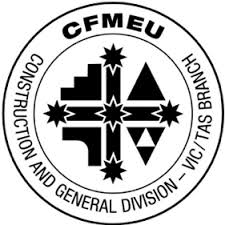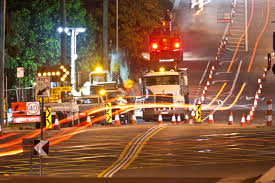Title Page
-
Site conducted
-
Conducted on
-
Prepared by
-
Location
Untitled Page
Planning Risk Assessment
-
Are all activities relating to traffic management identified, classified, and risk assessed?
-
Are all identified risks associated with traffic management documented in the Project Risk Register?
-
Is the risk assessment for traffic management conducted in line with the Risk Management & Hazard Identification procedure?
Planning Assess the Work Site
-
Are standard signs, devices, and exclusion measurements used to protect workers from live traffic passing adjacent to works as defined by AS1742.3 Section 4.2 and reflected in each State's derivative publication?
Planning Mandatory Requirement
-
For all works occupying a public road, is either a Traffic Management Plan or a Traffic Guidance Scheme developed and approved by us and the jurisdictional Road Authority where required?
-
For all works that occupy a public road for any duration, is the Traffic Management Plan or Traffic Guidance Scheme approved by us?
-
For all works that occupy a public road for any duration, is the Traffic Management Plan or Traffic Guidance Scheme approved by the jurisdictional Road Authority where required?
-
When workers are on foot adjacent to live traffic, is a temporary roadwork speed zone of 40km/h (or less) established via an approved Traffic Guidance Scheme unless the exception outlined in 5.1.3 applies?
-
If workers on foot are safely located outside the dynamic deflection width and within the Length of Need of an approved static safety barrier system (ASBAP accepted), installed and operated in conformance with the manufacturer's guidelines and AS3845, is the 40km/h speed limit exception applied?
-
Does this mandatory speed limit requirement apply to all static lane/shoulder closures that utilize advance signage and cones/bollards?
-
Does the speed limit requirement also encompass mobile works as defined by AS1742.3 and relevant jurisdictional Codes of Practice?
-
Does this requirement include all intermittent works, even those previously conducted using Truck Mounted Attenuators for short-term maintenance activities in shoulders?
Planning Traffic Management Plan
-
Are all traffic management activities assessed for risks, and are these risks addressed through the hierarchy of controls as outlined in this procedure?
-
Is a Traffic Management Plan or equivalent plan prepared for all works occupying a public road for any duration?
-
Is the Traffic Management Plan prepared by a qualified and licensed person as per the National Training Matrix?
-
Can the Traffic Management Plan only be altered by a worker who meets the relevant Road Authority competency requirements?
-
Are the competencies of the person authorized to alter the TMP listed within the TMP itself?
-
Does the Traffic Management Plan authorization identify that it was prepared in accordance with relevant legislation, codes of practice, Australian/NZ standards, or other requirements?
-
Does the TMP include Location-specific Traffic Control Plans (Traffic Guidance Schemes)?
-
Does the TMP outline the methodology for implementing and dismantling traffic control devices?
-
Is the TMP approved as required by the relevant authority prior to implementation?
-
Is the Traffic Management Plan reviewed at least every 6 months for adequacy as the Project develops?
-
Does the TMP consider Client requirements, including those set out in the brief, scope of works, and technical criteria?
-
Does the TMP consider Project location and existing traffic conditions, including volumes of traffic and speed limits?
-
Does the TMP consider Site constraints and potential impacts from the proposed traffic works?
-
Does the TMP consider the Time of day that works are being conducted?
-
Does the TMP consider the Controls necessary to separate people (public or workers) from traffic, based on known speeds of passing traffic?
-
Is a sketch for the proposed works on the road developed by a'suitably qualified' person (as determined by each jurisdiction)?
-
Is the TGS selected from the generic plans provided by the relevant State manual (AS1742.3 interpretations), where applicable?
-
Does the sketch include Temporary traffic paths, their delineation, and the position of traffic control signage and warning devices?
-
Does the sketch include Spacing, location, and description of advance signage?
Planning Qualified Designers
-
For multi-stage works, does the sketch include a separate plan for each stage?
-
Does the sketch include details of after-hours traffic arrangements, if required?
Planning TGS/TCP Development
-
Is a Traffic Guidance Scheme (TGS) or Traffic Control Plan (TCP) developed for each shift at an individual location for a single work activity using short-term controls, signs, and devices?
-
Does the development of the TGS consider the protection of workers?
-
Does the development of the TGS consider safe clearances between workers and traffic?
-
Does the development of the TGS consider the provision for suitable warning of changes to the surface condition and the presence of personnel working on the road?
-
Does the development of the TGS consider adequate instruction of road users and their guidance safely through, around, or past the work site?
-
Are signs and devices installed by a competent person (relevant certification as determined by each jurisdiction)?
-
Are signs and devices appropriate to the conditions at the worksite and used in accordance with the relevant state standard?
-
Are all signs and devices installed and visible before work commences at the worksite?
-
Are property accesses, side roads, and any distinctive features considered when determining the position of signs and devices?
-
Are signs and devices checked during the deployment of the traffic control?
-
Are redundant and/or conflicting signs obscured during the works?
Planning Apply for Permission
-
Does the Site Traffic Manager (or delegate) apply to the relevant Road Authority for approval of the Traffic Management Plan (as required)?
-
Does the application for road occupation identify the safe working hours based on the AADT counts for the specified road (or as defined in contract conditions)?
-
Does the application avoid work sites downstream from major events or planned events that may increase traffic volumes approaching the work area?
-
Is the application submitted for approval as per the Project contract conditions?
-
Does the application include the Traffic Guidance Scheme (TGS)?
-
Does the application include any pedestrian or vehicle movement plans within the work area?
Planning Apply for Permission
-
For high impact works (detours, sidetracks, or full closures), does the application include a VMS strategy?
-
For high impact works, does the application reference any required community notification strategy?
-
Does the application nominate an on-site contact?
Planning Safe Work Method
-
Is a Safe Work Method Statement (SWMS) developed for all work tasks that involve work near live traffic?
-
Does the SWMS consider the hierarchy of controls as described in section 5.2 of this procedure?
-
Does the SWMS detail the competency requirements to implement controls?
-
Does the SWMS detail communication protocols?
-
Does the SWMS detail manual tasks?
-
Does the SWMS detail the methodology for implementing and dismantling traffic control devices?
-
Does the SWMS detail the emergency response procedures?
Planning Emergency Planning
-
Does each project have an Emergency Critical Incident Response Plan (ECIRP) that describes how ACCIONA will carry out their emergency response and incident management obligations during construction?
-
For all tasks where there is a risk of a worker or a member of the public being exposed to live traffic, does the site-specific ECIRP outline a method for responding to all potential emergencies?
-
Does the site-specific ECIRP complement and corroborate the existing emergency response practices of the Road Authority?
-
Are arrangements for emergencies involving workers and members of the public established in conjunction with the site emergency response team and off-site emergency service workers, if required?
-
Does the emergency planning consider the competencies/capabilities of workers who will undertake first aid if required?
-
Does the emergency planning consider the type of equipment available for protection during a rescue and how it will be accessed in an emergency?
-
Does the emergency planning consider mechanisms for assisting injured workers?
-
Does the emergency planning consider evacuation arrangements?
-
Does the emergency planning consider means of communication both internally and with emergency services?
-
Does the Safety in Design stage consider the elimination of the risk of works near live traffic by using road closures, detours, and traffic stages?
-
Have substitution controls been considered to remove the risk of works near live traffic, such as replacing workers working as traffic controllers with automatic or remote traffic signals or port-a-booms?
-
Have substitution controls been considered to remove the risk of works near live traffic, such as replacing workers with remote control mowing plant when conducting maintenance?
-
Have substitution controls been considered to remove the risk of works near live traffic, such as using a cone machine/robot to automatically deploy or collect traffic cones?
-
Have substitution controls been considered to remove the risk of works near live traffic, such as performing the majority of works off-site and lifting them into place?
-
Have all feasible options been explored to eliminate the need for work near live traffic, such as road closures, detours, and traffic stages?
-
Have substitution controls been considered to remove the risk of works near live traffic, such as replacing workers working as traffic controllers with automatic or remote traffic signals or port-a-booms?
-
Hierarchy of controls Isolation: Have substitution controls been considered to remove the risk of works near live traffic, such as replacing workers with remote control mowing plant when conducting maintenance?
-
Hierarchy of controls Isolation: Have substitution controls been considered to remove the risk of works near live traffic, such as using a cone machine/robot to automatically deploy or collect traffic cones?
Hierarchy of controls Isolation
-
Have substitution controls been considered to remove the risk of works near live traffic, such as performing the majority of works off-site and lifting them into place?
-
Are road safety barriers, when used, installed in accordance with the relevant Road Authority requirements and AS3845?
-
Have the points where the need for a road safety barrier system begins and ends been considered?
-
Have the test levels and compatibility of the chosen barrier system with expected vehicle impacts been considered?
-
Has the minimum transverse offset required from the edge of the adjacent traffic lane been considered?
-
Have allowable dynamic deflection and working width restrictions been considered?
-
Has the interface to existing systems been considered?
-
Has the nature of the ground or structural support required been considered?
-
Have provisions for expansion or contraction of the foundation been considered?
-
Has the use of gating devices as terminals (where applicable) been considered?
-
Has the incorporation of road furniture or systems (acoustic devices, delineators, sign support systems, lighting columns) been considered?
-
Has the spacing and nature of provisions for access through the road safety barrier system in an emergency or for planned work that requires different traffic arrangements for short periods been considered?
-
Has the potential impact of traffic on the road safety barrier system in the reverse direction been considered?
-
Are vehicle barriers used to prevent vehicle access to work zones where appropriate?
-
Are pedestrian barriers used to prevent works or members of the public accessing work zones where appropriate?
-
Where used, is Perimeter Containment Screening placed in accordance with the relevant Road Authority requirements?
-
Are water-filled barriers only used where approved by the relevant Road Authority and in accordance with AS3845?
Hierarchy of controls Engineering
-
Are Truck/Trailer Mounted Attenuators (TMAs) used where appropriate as an engineering control to manage the risk of work near live traffic?
-
Are all TMAs used on the project approved for use and compliant with the relevant Road Authority requirements?
-
Are TMAs operated in accordance with the Original Equipment Manufacturer's Specifications and applicable Road Authorities guidelines?
Hierarchy of controls Administration
-
Where the primary control for tasks involving work near live traffic relies on an administrative control, is this control approved by the Project Manager or delegate before work commences?
-
Hierarchy of controls PPE (Mandatory) Is PPE considered only as a last resort after all other higher levels of control (elimination, substitution, isolation, engineering) have been implemented to minimize the risk of workers being struck by live traffic?
-
Hierarchy of controls PPE (Mandatory) Do workers wear high visibility reflective garments meeting the requirements of Australian/New Zealand Standard 4602.1 and Australian/New Zealand Standard 1906.4 when working near live traffic?
Site works Implementing Traffic
-
Is a copy of the approved permit and TGS maintained on-site?
-
Is the site driven through before work begins to ensure the TGS has been installed correctly?
-
Are there no redundant, obstructing, or distracting signs on display?
-
Are periodic setup drive-throughs conducted?
-
Are regular breaks and task rotation of workers ensured?
-
Is driver behavior / compliance monitored?
-
0200-010-030.01 PTP-PRO Traffic Management 5.3.1 Site works Implementing Traffic Are weather conditions monitored?
-
0200-010-030.01 PTP-PRO Traffic Management 5.3.1 Site works Implementing Traffic Is a Traffic Guidance Scheme (TGS) Shift Inspection Checklist or equivalent completed and submitted to the traffic supervisor at the completion of the shift?
-
0200-010-030.01 PTP-PRO Traffic Management 5.3.1 Site works Implementing Traffic Are all signs placed considering line of sight and sight distances?
-
0200-010-030.01 PTP-PRO Traffic Management 5.3.1 Site works Implementing Traffic Are all signs placed considering actual approach speeds?
-
Are all signs placed considering the management of back of queue congestion, if any?
-
Are all signs placed considering visibility, shade, or high glare areas?
-
Are all signs placed considering the effects of sunrise or sunset?
-
Do only competent certified traffic controllers work on-site?
-
Are traffic controllers suitably positioned?
-
Is a trafficable path for vehicles maintained and clearly defined?
-
Are all non-consistencies reported to the Foreman / Supervisor?
-
Is the TMC called, if required, and the permit deactivated at the conclusion of the shift?
Site works Modifying TGS
-
If the approved short-term TGS no longer suits the work activity, are amendments made by a suitably qualified and competent person?
Site works Modifying TGS
-
Are amendments to the TGS made to address minor changes such as geographic inconsistencies on site, physical obstructions, or altered personnel resources required to affect the safe deployment of traffic control?
-
When making on-site amendments to the TGS, does the suitably qualified person sign the drawing (or document in the TGS Inspection Checklist) indicating clearly the changes made?
-
PTP-PRO Traffic Management
-
Site works Modifying TGS
-
Do these on-site amendments still comply with AS 1742.3 and the relevant State practices?
-
Are the TC crew briefed on any changes made to the TGS on-site?
-
Is the site set up as per the amended TGS?
-
Is the amended drawing submitted at the end of shift to the Traffic Foreman, and/or the Traffic Manager/Traffic Representative on-site?
-
0200-010-030.01 PTP-PRO Traffic Management 5.3.2 Site works Modifying TGS For "one-off" changes, is the amended plan filed for record-keeping purposes?
-
0200-010-030.01 PTP-PRO Traffic Management 5.3.2 Site works Modifying TGS For changes expected to be ongoing for multiple shifts, is the amended plan re-drafted and re-issued as the TGS for that location in the future?
-
0200-010-030.01 PTP-PRO Traffic Management 5.3.2 Site works Modifying TGS In states where required, are any changes beyond sign relocations approved by a qualified road designer (e.g., RPEQ approval in QLD)?
-
0200-010-030.01 PTP-PRO Traffic Management 5.3.2 Site works Modifying TGS Is a site visit preferred over "Google Earth" type familiarization for developing and amending TGS plans?
-
0200-010-030.01 PTP-PRO Traffic Management 5.3.3 Site works Monitoring Is an audit and inspection program developed and implemented as integral parts of the TMP and TGS?
-
0200-010-030.01 PTP-PRO Traffic Management 5.3.3 Site works Monitoring Does the inspection program comply with the relevant Road Authority requirements, legislation, and relevant Australian standards?
-
PTP-PRO Traffic Management 5.3.3 Site works Monitoring
-
Does the inspection program ensure that traffic control devices are in accordance with the Traffic Management Plan or Traffic Guidance Scheme?
-
Does the inspection program identify adjustments and modifications that need to be updated on the Traffic Guidance Scheme?
-
Does the inspection program monitor for tampering/vandalism of traffic control devices?
-
Site works Inspections
-
Does an ACCIONA employee or subcontractor holding the required traffic qualifications (as detailed in the National Training Matrix) review the work site directly under their control at the beginning, during, and end of each shift?
-
Are these reviews conducted in accordance with AS1742.3, using a Traffic Guidance Scheme (TGS) Shift Inspection Checklist or equivalent (for short-term schemes) and a Traffic Control Post Completion Inspection Checklist or equivalent (for long-term schemes)?
-
PTP-PRO Traffic Management
-
Site works Inspections
-
Are any changes made to the traffic control setup recorded against the TGS?
-
Site works Audits
-
Does the Traffic Manager or appointed Traffic Representative, holding the highest "Traffic Control Qualification" relevant in that state (as per the National Training Matrix), conduct a Traffic Management Audit (PTP-FOR) on a minimum monthly basis where traffic management is being implemented?
-
- Are all actions identified during the Traffic Management Audit addressed as soon as practicable, within 24 hours of receiving the checklist?
-
- Is the Traffic Management Audit closed out within seven days via a written or verbal response to the competent person?
-
- Is a record of the Traffic Management Audit kept on file on-site?
-
PTP-PRO Traffic Management
-
Site works Audits
-
Are road safety auditors engaged to ensure newly constructed and/or altered roads comply with the relevant state road safety requirements?
-
Other requirements Training
-
Do project inductions cover the provisions of any traffic/vehicle movement plan and the relevant site rules?
-
Qualifications
-
Other requirements Training
-
Do supervisors have the relevant experience for the work activities being completed, including work being conducted on highways?
-
Qualifications
-
- Do any workers involved with traffic control meet the minimum applicable regulatory requirements of the jurisdiction in which they are working?
-
- Do workers who audit/inspect traffic control arrangements receive the necessary training?
-
- Do workers who design new TMPs and/or Traffic Guidance Schemes receive the necessary training?
-
Traffic Management
-
Do workers who set up traffic control receive the necessary training?
-
Do workers who control traffic with STOP/SLOW bats or other traffic control devices receive the necessary training?
-
Do traffic control workers meet the minimum relevant Road Authority requirements as detailed in the National Training Matrix?
-
PTP-PRO Traffic Management 5.4.2
-
Other requirements Lighting
-
- Are work areas where workers or plant might encroach on traffic lanes adequately illuminated?
-
- Are intersections where work is taking place adequately illuminated?
-
- Does the lighting at the work site comply with relevant legislation for work environment requirements?
-
- Are lighting towers positioned so as not to adversely affect passing motorists or nearby residents?
-
Is a drive-through of the work area conducted once lights are illuminated to confirm that they do not adversely affect passing motorists or nearby residents?








